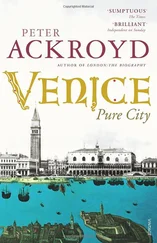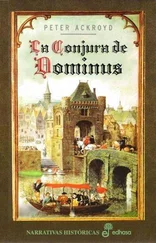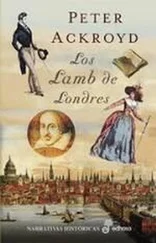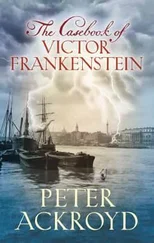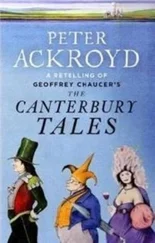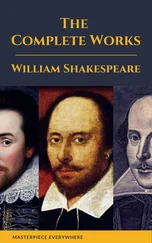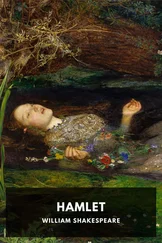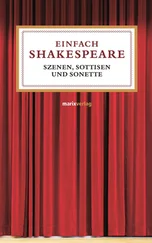Peter Ackroyd - Shakespeare
Здесь есть возможность читать онлайн «Peter Ackroyd - Shakespeare» весь текст электронной книги совершенно бесплатно (целиком полную версию без сокращений). В некоторых случаях можно слушать аудио, скачать через торрент в формате fb2 и присутствует краткое содержание. Год выпуска: 2005, ISBN: 2005, Жанр: Биографии и Мемуары, на английском языке. Описание произведения, (предисловие) а так же отзывы посетителей доступны на портале библиотеки ЛибКат.
- Название:Shakespeare
- Автор:
- Жанр:
- Год:2005
- ISBN:978-0-307-49082-7
- Рейтинг книги:5 / 5. Голосов: 1
-
Избранное:Добавить в избранное
- Отзывы:
-
Ваша оценка:
- 100
- 1
- 2
- 3
- 4
- 5
Shakespeare: краткое содержание, описание и аннотация
Предлагаем к чтению аннотацию, описание, краткое содержание или предисловие (зависит от того, что написал сам автор книги «Shakespeare»). Если вы не нашли необходимую информацию о книге — напишите в комментариях, мы постараемся отыскать её.
Shakespeare — читать онлайн бесплатно полную книгу (весь текст) целиком
Ниже представлен текст книги, разбитый по страницам. Система сохранения места последней прочитанной страницы, позволяет с удобством читать онлайн бесплатно книгу «Shakespeare», без необходимости каждый раз заново искать на чём Вы остановились. Поставьте закладку, и сможете в любой момент перейти на страницу, на которой закончили чтение.
Интервал:
Закладка:
There were other gifts to relatives and to neighbours, as well as the price of three gold rings for three of his colleagues from the King’s Men — Richard Burbage, John Heminges and Henry Condell. Since Heminges and Condell were the begetters of the subsequent Folio edition of his plays, the rings can be considered to be a “forget not” token. It makes it more, rather than less, likely that in Stratford he had been revising his plays for future publication.
He left £10 for the relief of the poor of Stratford, by no means an extravagant sum, and his processional sword to Thomas Combe. It has been considered odd or singular that Shakespeare mentions no books or play-manuscripts in this will, but they may have been included in the “goods” generally inherited by the Halls. They could also have formed part of an inventory that is now lost. In his own will, at a later date, John Hall refers to his “study of Bookes” which were entirely scattered to the winds. There was also a report that Shakespeare’s granddaughter (he had no male heirs) “carried away with her from Stratford many of her grand-father’s papers,” 7but this cannot now be verified.
It is a sensible and business-like document, evincing Shakespeare’s eminently practical temperament. It is true that other early seventeenth-century testators are more effusive in their allusions to family and friends, but they had not spent a lifetime writing plays. When one eighteenth-century antiquary complained that the will was “absolutely void of the least particle of that Spirit which Animated our Great Poet,” 8he forgot that he was dealing with a legal document rather than a work of art. The distinction would not have been lost on Shakespeare himself. He signed the first two sheets of the will “Shakspere,” and the final sheet was completed with the words “By me William Shakspeare.” The surname trails off, as if the hand could hardly hold or direct the pen. These were the last words he ever wrote.
Shakespeare lingered for four weeks from March into April; if he was indeed suffering from typhoid fever, the period is right. He would have experienced insomnia, fatigue and overwhelming thirst which no amount of liquid could reasonably assuage. It is reported from no very reliable source that “he caught his death through leaving his bed when ill, because some of his old friends had called on him.” 9We have had cause to note the belief that “he dyed a Papist,” which may mean that he was given extreme unction according to the old Catholic rite. As death approached, the passing bell was rung in the Stratford church. He died on 23 April and, having been born on the same day, he had just entered his fifty-third year.
He was embalmed and laid upon the bed, wrapped in flowers and herbs in the process known as “winding” the corpse. His friends and neighbours walked solemnly through New Place to view the body; the principal rooms and staircases were draped with black cloths. The corpse was then “watched” until interment. He was wrapped in a linen winding sheet and, two days later, carried down the well-worn “burying path” to the old church. It was sometimes the custom to accompany the burial procession with music. He was said to have been buried at a depth of some 17 feet; this seems a deep pit indeed but it may have been dug out of fear of contagion from the typhus. He was placed beneath the floor of the chancel, beside the north wall, as his status as lay rector and receiver of tithes required. It is likely to have been Shakespeare himself who wrote the epitaph:
GOOD FREND FOR IESVS SAKE FORBEARE,
TO DIGG THE DVST ENCLOASED HEARE!
BLEST BE YE MAN YT SPARES THES STONES,
AND CVRST BE HE YT MOVES MY BONES.
He gave the world his works, and his good fellowship, not his body or his name.
The mourners carried small bunches of rosemary or bay to throw into the grave which, to this day, is visited by thousands of admirers and pilgrims.
CHAPTER 91. To Heare the Story of Your Life
He died as he had lived , without much sign of the world’s attention. When Ben Jonson expired his funeral procession included “all of the nobility and gentry then in the town.” 1Only Shakespeare’s family and closest friends followed his bier to the grave. There were scant tributes paid to his memory by other dramatists, and the commendatory verses in the Folio of 1623 are slight indeed compared to the copious verse epistles on the deaths of Jonson, Fletcher and other fashionable playwrights. There were no books by Shakespeare in Jonson’s library. Shakespeare neither established nor encouraged any school of younger “disciples.”
It was only after half a century that the first biographical notices appeared, and no scholar or critic bothered to discuss Shakespeare with any of his friends or contemporaries. This may preface Emerson’s remark that “Shakspeare is the only biographer of Shakspeare.” 2He is one of those rare cases of a writer whose work is singularly important and influential, yet whose personality was not considered to be of any interest at all. He is obscure and elusive precisely to the extent that nobody bothered to write about him.
Yet the range of Shakespeare’s influence is not hard to discern. More than seventy issues and editions of his work appeared in his lifetime. By 1660 no fewer than nineteen of his plays had been published, and by 1680 there had been three editions of his collected plays. Theatrical reports suggest that, in hard times, the King’s Men supported themselves by replaying Shakespeare’s “old” dramas. Other playwrights, including Massinger and Middleton, Ford and Webster, Beaumont and Fletcher, were drawn to imitate him. Othello and Romeo and Juliet were particularly influential among younger dramatists, and the figures of Hamlet and of Falstaff maintained their theatrical life and presence outside the plays in which they had originally appeared. Shakespeare also seems almost single-handedly to have maintained the status of the revenge tragedy and the romance. He was a hard writer to ignore.
On the occasion of the Shakespeare Jubilee, in the summer of 1769, a painting was hung before the windows of the room where the dramatist was supposed to have been born; it displayed the image of the sun breaking through clouds. It is a wonderful emblem of birth. But it also suggests revival and return. If at a later date that sun had shone through another window of the house in Henley Street its rays would have been refracted through a score of different names, where distinguished nineteenth-century visitors had scratched or scored their signatures upon the glass. Among them are Sir Walter Scott, and Thomas Carlyle, William Makepeace Thackeray and Charles Dickens, all of them registering the fact that they were shining within the light of Shakespeare himself.
The Folio or collected volume of his plays followed some seven years after his death. It was assembled by two of his fellows, John Heminges and Henry Condell, and was dedicated to the two Pembroke brothers. The Earl of Pembroke was Lord Chamberlain and the direct superior of the Master of the Revels. It served its purpose very well, and was for three centuries believed to represent the Shakespearian “canon” of thirty-six plays with the notable exclusion of certain collaborative ventures such as Pericles (later added) and The Two Noble Kinsmen . The fact that a list of the actors was added at the beginning suggests that this was as much a theatrical as a literary celebration. It may have been the subject of discussion among Shakespeare and his colleagues before his death, and it is even possible that some of the plays were printed from a revised transcript by the playwright himself. Many of them, however, are in the hand of a professional scrivener named Ralph Crane who was often employed by the theatrical companies. The volume is adorned by the Droeshout engraving of the dramatist, which is indeed the only generally accepted likeness of William Shakespeare.
Читать дальшеИнтервал:
Закладка:
Похожие книги на «Shakespeare»
Представляем Вашему вниманию похожие книги на «Shakespeare» списком для выбора. Мы отобрали схожую по названию и смыслу литературу в надежде предоставить читателям больше вариантов отыскать новые, интересные, ещё непрочитанные произведения.
Обсуждение, отзывы о книге «Shakespeare» и просто собственные мнения читателей. Оставьте ваши комментарии, напишите, что Вы думаете о произведении, его смысле или главных героях. Укажите что конкретно понравилось, а что нет, и почему Вы так считаете.



